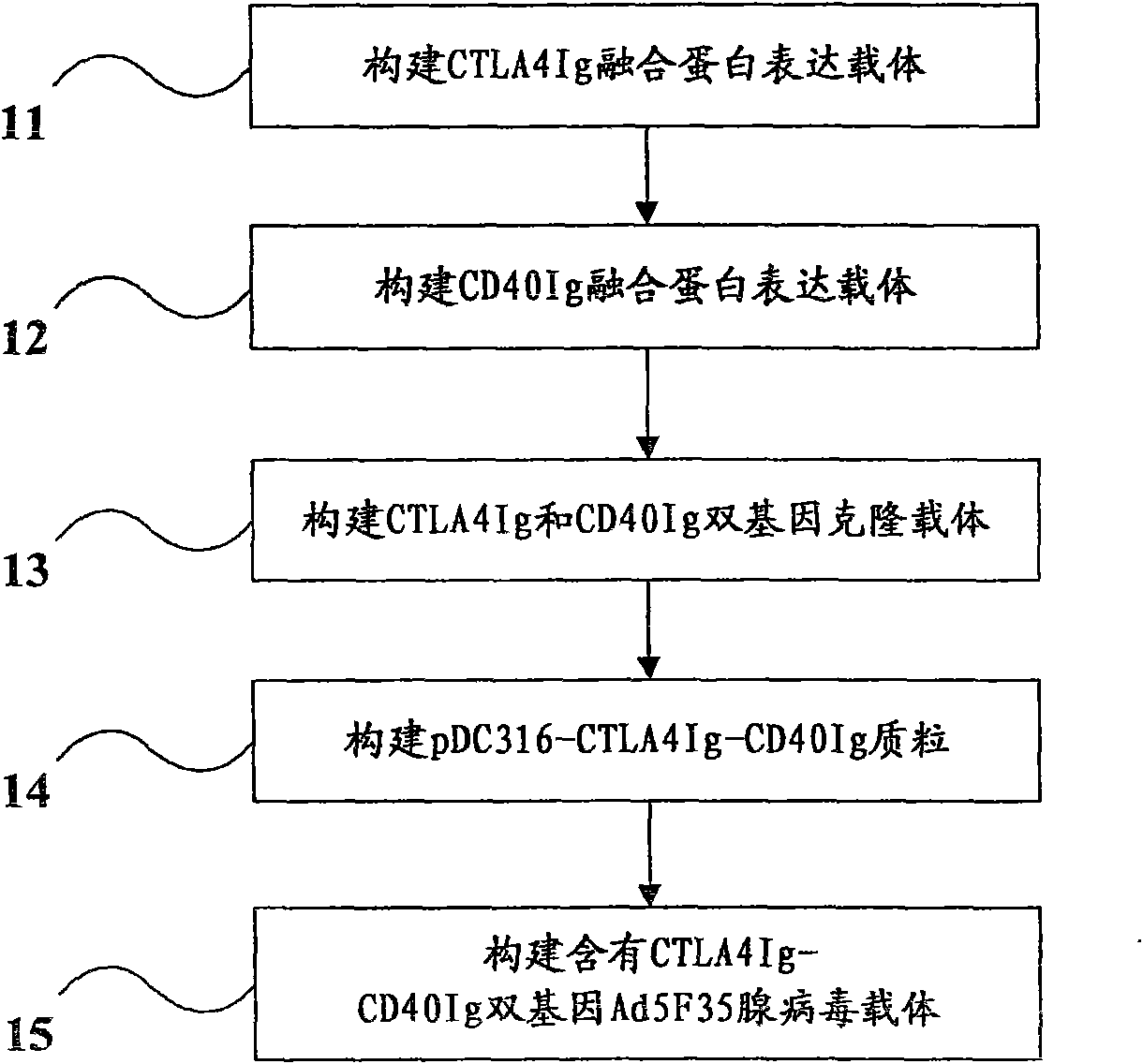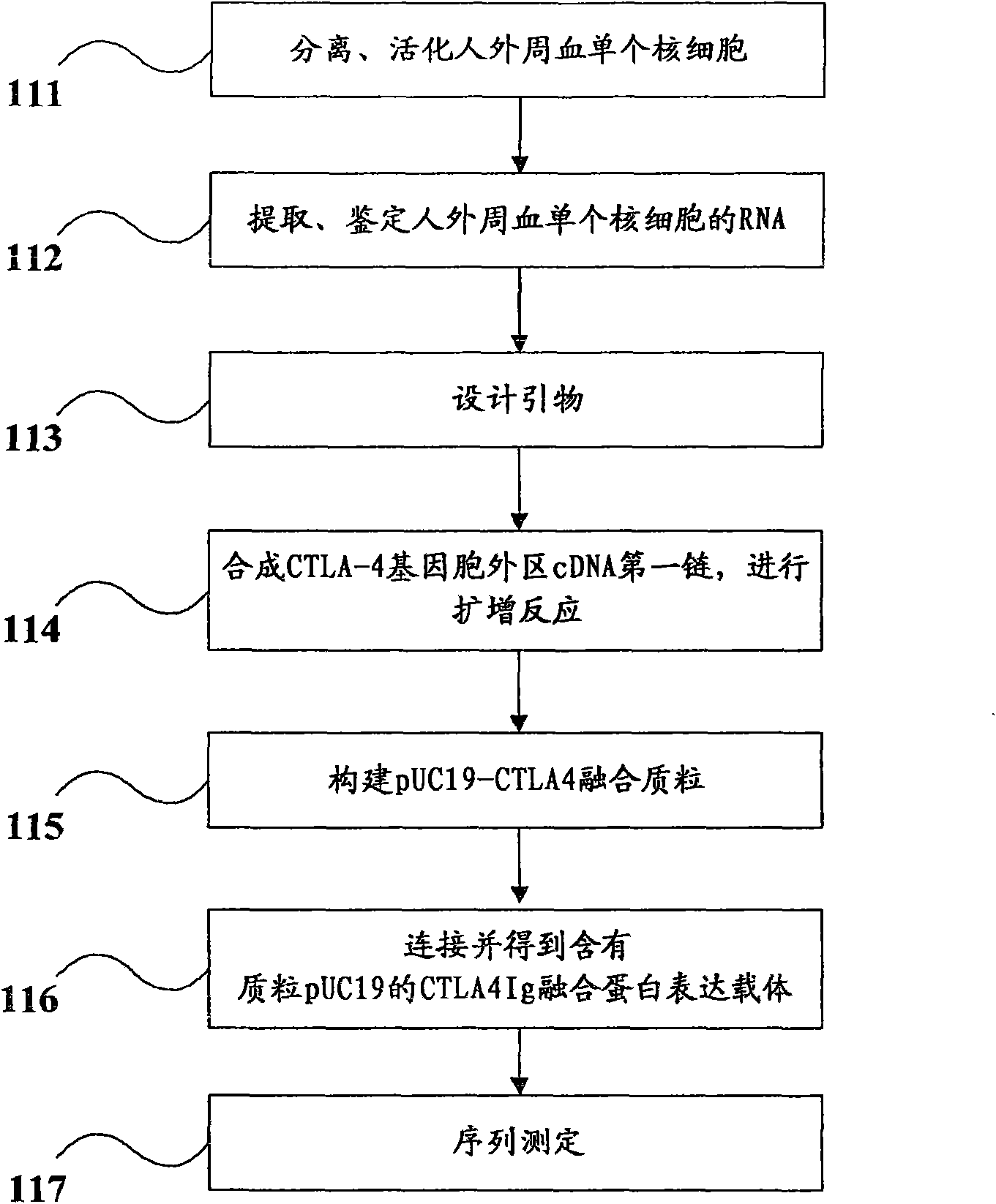Skin tissue engineering seed cells, construction method, adenovirus vector and use thereof
A technology of skin tissue engineering and seed cells, which is applied in the field of biomedicine, can solve problems such as immune rejection, and achieve the effect of reducing immunogenicity and immunogenicity
- Summary
- Abstract
- Description
- Claims
- Application Information
AI Technical Summary
Problems solved by technology
Method used
Image
Examples
no. 1 example
[0115] Step 1001, move the human skin taken from the circumcision into the ultra-clean operating table, rinse it with double-antibody PBS (containing 100u / ml penicillin and 100u / ml streptomycin; pH is 7.2) solution for 5 times, and put it in a petri dish Trim the subcutaneous fascia cells and excess subcutaneous fat, cut the trimmed human skin specimens into 0.3cm×2cm leather strips, then immerse them in Dispase II enzyme with a concentration of 2.5g / L, and digest them at 4°C for 12 hours . Remove the epidermis from the human skin specimen digested by Dispase II enzyme, cut the separated dermis into a paste with ophthalmic scissors, add collagenase at a concentration of 200U / ml and digest it in an incubator at a temperature of 37°C for 1 hour, and the tissue is basically The digestion was spread out to prepare a single cell suspension to the extent that no tissue pieces could be seen. Transfer the digest to a 10ml centrifuge tube, centrifuge and wash with PBS at 1500 rpm for ...
no. 2 example
[0166] Step 2001, move the human skin taken from the circumcision operation into the ultra-clean operating table, rinse 5 times with a double-antibody PBS (containing 100u / ml penicillin and 100u / ml streptomycin; pH is 7.2), and put it in a petri dish Trim the subcutaneous fascia cells and excess subcutaneous fat, cut the trimmed human skin specimens into 0.3cm×2cm leather strips, then immerse them in Dispase II enzyme with a concentration of 2.5g / L, and digest them at 4°C for 14 hours . Remove the epidermis from the human skin specimen digested by Dispase II enzyme, cut the separated dermis into a paste with ophthalmic scissors, add collagenase at a concentration of 200U / ml and digest it in an incubator at a temperature of 37°C for 2 hours, and the tissue is basically The digestion was spread out to the extent that no tissue pieces were visible, and a single cell suspension was prepared. Transfer the digest to a 10ml centrifuge tube, centrifuge and wash with PBS at 1500 rpm f...
no. 3 example
[0217] Step 3001, move the human skin taken from the circumcision into the ultra-clean operating table, rinse it with double-antibody PBS (containing 100u / ml penicillin and 100u / ml streptomycin; pH is 7.2) solution for 5 times, and put it in a petri dish Trim the subcutaneous fascia cells and excess subcutaneous fat, cut the trimmed human skin specimens into 0.3cm×2cm leather strips, then immerse them in Dispase II enzyme with a concentration of 2.5g / L, and digest them at 4°C for 16 hours . Remove the epidermis from the human skin specimen digested by Dispase II enzyme, cut the separated dermis into a paste with ophthalmic scissors, add collagenase at a concentration of 200U / ml and digest it in an incubator at a temperature of 37°C for 4 hours, and the tissue is basically The digestion was spread out to the extent that no tissue pieces were visible, and a single cell suspension was prepared. Transfer the digest to a 10ml centrifuge tube, centrifuge and wash with PBS at 1500 r...
PUM
 Login to View More
Login to View More Abstract
Description
Claims
Application Information
 Login to View More
Login to View More - R&D
- Intellectual Property
- Life Sciences
- Materials
- Tech Scout
- Unparalleled Data Quality
- Higher Quality Content
- 60% Fewer Hallucinations
Browse by: Latest US Patents, China's latest patents, Technical Efficacy Thesaurus, Application Domain, Technology Topic, Popular Technical Reports.
© 2025 PatSnap. All rights reserved.Legal|Privacy policy|Modern Slavery Act Transparency Statement|Sitemap|About US| Contact US: help@patsnap.com



